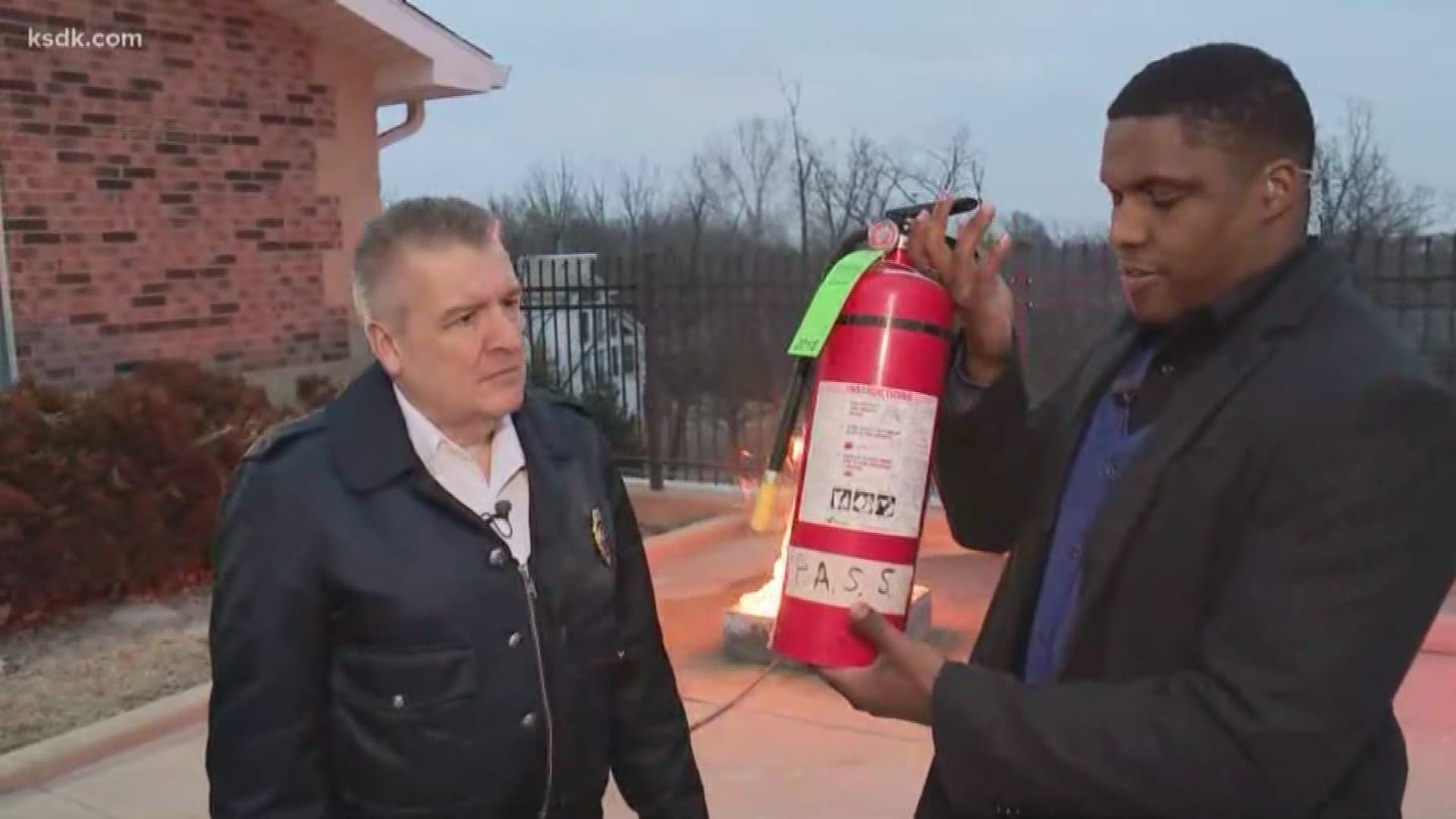ST. LOUIS — We now know that fire is faster. That newer homes and furniture burn much more quickly than they used to. Ron Harder with Rock Community Fire Protection said people have up two to three minutes to escape a burning home.
You’ve also heard over and over again that you need working smoke alarms and carbon monoxide detectors. Those batteries should be tested twice a year and the devices replaced after 10 years.
Have an escape plan
Harder said having an emergency escape plan is one of the most important things that could save you and your family during a fire.
First, when it comes to a house fire, the thing you should worry about most is the smoke. It's not the flames that kill people, it's the smoke, Harder stressed.
"Stay low and go" is the motto because more breathable air will be closer to the ground.
All families should have two points of exit in case one exit is blocked during an emergency. Once away from danger, meet at a designated safe spot. Firefighters suggest families should practice the plan so all family members know what to do.
'Before you doze, close'
Another great piece of advice that not everyone knows is to sleep with your bedroom door closed. That simple act reduces the amount of carbon monoxide and heat in the room and helps keep the toxic smoke out.
Having that area sealed stops airflow essentially, buying you more time for firefighters to get there and help.
But, before trying to leave the room, feel the door. If it's hot, don't open it. There could be a 1,000 degree heat difference on the other side of the door.
PREVIOUS: 'I could feel my skin burning again' | Former firefighter opens up about his fight with PTSD
If you're on the second floor, don't jump out of a window. Make sure a ladder is part of your escape plan and use that to safely get out of the house.
If you're in your bedroom at night and you're trapped, turn the light on, because that will be a signal to firefighters to check that room.
Get a fire extinguisher and know how to use it
All homes should have fire extinguishers that are in good working order in easily accessible places.
The acronym P.A.S.S. is a good reminder for how to use the extinguisher.
Pull the pin
Aim the hose at the base of the fire
Squeeze the trigger
Sweep the hoes

